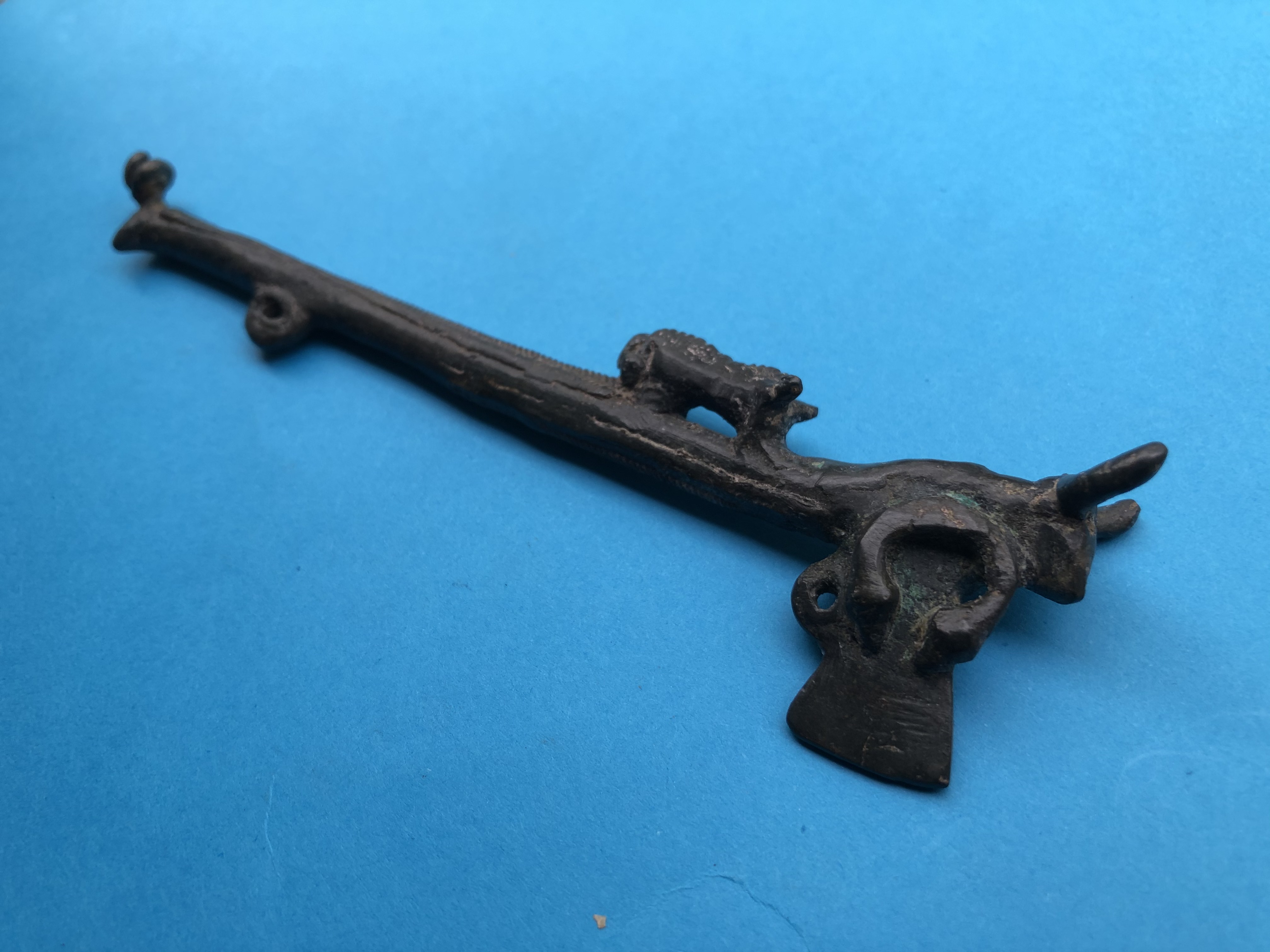Votive axe

The latest excavation campaigns that have been carried out in the Castro de Viladonga - financed by the Xunta de Galicia through the European funds for regional development (FEDER) and carried out by the company Terra Arqueos- are providing relevant findings that are shaping the existence of an important phase of occupation corresponding to the end of the Castro culture, in which the bronze axe found on one of the final steps of the access stairway to the monumental cistern discovered in 2018 is framed.It is a sector that had not been excavated in that campaign and in which a long crossbar fibula was also found, as well as ceramics, coals and bone remains.
This axe joins the discoveries on the beach of A Basteira (in Cariño, A Coruña), in the archaeological excavations of Punta Atalaia (in Cervo, Lugo), in Monte da Trinidade (Vilamaior, Mondoñedo, Lugo) and the deposited one in the Museum of Pontevedra of supposed Laline origin, as well as others in the north of Portugal and in the northwest of the plateau.
It is a piece in a very good state of conservation, of probable sacrificial use, associated with rituals of commonality and in which all the characteristic elements of this type of objects are represented: the ritual animals (ram, bull and wild boar), the torques, the cauldron and the decoration of rope form.
In addition to this singular piece, the excavations are bringing to light remains that confirm a long period of occupation that spans from the 4th-2nd century BC to the 5th AD.
The monumentality of the remains of the cistern and the adjacent buildings, of the cobblestone street and off the wall, which are surprising for their dimensions, is also remarkable.



